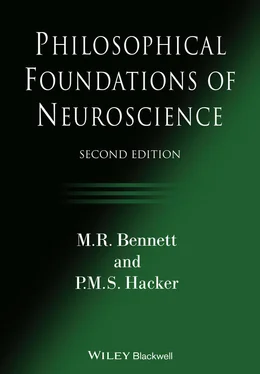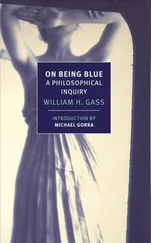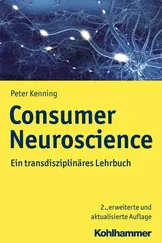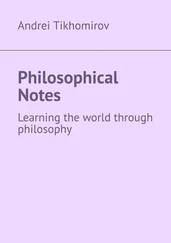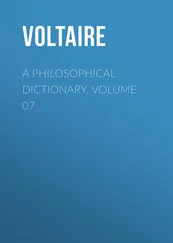The result of Willis’ s work was to move attention completely away from the ventricles for the first time in over 1,000 years and to centre both research and speculation on the cortex as the biological basis of the psychological attributes of humans.
The cortex 100 years after Willis
The revolution due to Willis ultimately led to a focus on the relationship between the cortex and those nerve trunks that could be argued to be intimately related to it. For the century after Willis there was no advance regarding the problem of functional localization in the brain. In 1784 Jiri Prochàska (1749–1820) did not go much beyond Willis:
Since, however, the Sensorium commune, by certain laws peculiar to itself and without the consciousness of the mind, reflects sensory impressions into motor, and because we have declared the Sensorium commune to be comprised of the spinal marrow, medulla oblongata, and the whole origin of the nerves, it follows that, with the exception of the Sensorium commune, the cerebrum and cerebellum and their parts are the organs of the faculty of thought. 61
Mistichelli and du Petit describe the decussation of the pyramids and identify motor function of pyramidal fibres in cortex
However, there was one remarkable contribution during this period, by Domenico Mistichelli (1675–1715) and Francois Pourfour du Petit (1664–1741). They both described the decussation of the pyramids – that is, the crossing over of nerves from left to right and right to left at the spinomedullary junction called the pyramid. 62Their remarkable work also placed the origins of the pyramidal fibres in the cortex, and du Petit went further, identifying the fibres as motor in function. Du Petit, a military surgeon, observed that contralateral motor paralysis followed a wound to the cerebral cortex. On the basis of these observations, he explained movement by the passage of animal spirits from the cortex, through the striatum and basal ganglia, and then across the pyramids to muscle. He gave the first explicit description of the motor cortex’ s controlling movement through the pyramidal tract. This prescient work has a remarkably modern ring to it.
1.4 The Concept of a Reflex:Bell, Magendie and Marshall Hall
The spinal cord can operateindependently of the enkephalon
It had been noted since time immemorial that cutting off the head of a snake did not stop its movements in response to a touch for some days. However, a thorough study of the ability of the spinal cord to mediate the contraction of muscle and movement in the absence of the enkephalon was not made until the investigations of Alexander Stuart (1673–1742). In his Croonian Lecture to the Royal Society of London in 1739, Stuart described experiments in which he first cut off the head of a frog and then used a blunt instrument to bring pressure on the medulla, resulting in the movement of the limbs. From these experiments he concluded that compression had forced the animal spirits out of the spinal cord into the nerves to the muscles. 63In this way Stuart thought that he had provided experimental evidence for the flow of animal spirit from the spinal cord to the muscle as the agent which initiated contraction.
The problem of how animals can continue to function at some level in the absence of the enkephalon was taken up next by Robert Whytt (1714–1766) in his works Essays on the Vital and Involuntary Motions of Animals and Observations on the Sensibility and Irritability of the Parts of Man and Other Animals , written about 1751 in Edinburgh. 64Whytt was not able to accept the mechanical principle that both Descartes and Willis had advanced: namely, that the reflex does not require the intervention of a soul to initiate it. He wrote: ‘ The motions performed by us in consequence of irritation , are owing to the original constitution of our frame, whence the soul or sentient principle , immediately, and without any previous ratiocination , endeavours by all means, and in the most effectual manner, to avoid or get rid of every disagreeable sensation conveyed to it by whatever hurts or annoys the body .’ It is important to note that this conception of the soul is more Cartesian than Aristotelian in inspiration. For it is a principle of sentience (and so of consciousness). Whytt anticipated Sherrington on the stretch reflex: ‘Whatever stretches the fibres of any muscle so far as to extend them beyond their usual length, excites them into contraction about in the same manner as if they had been irritated by any sharp instrument, or acrid liquor.’ 65
Idea of a spinal cord reflex
The idea of a ‘soul’ or sentient principle operating in the nervous system that remains after loss of the enkephalon was taken up by Prochàska. He resurrected the notion of the ‘Sensorium commune’ which had been associated with the lateral ventricles in the ventricular doctrine, but was now attributed by Prochàska to the brain and spinal cord. 66This work of Prochàska, in clearly associating sensory reception and motor action at the spinal cord level greatly helped in the development of the idea of a reflex. This connection is made explicit in his comment that: ‘As, therefore, the principal function of the Sensorium commune consists in the reflection of sensorial into motor impressions , it is to be observed, that this reflection takes place whether the mind be conscious or unconscious of it.’ 67But he too failed to resolve the problem.
Galvani’s discovery of animal electricity makes redundant the supposition of a cortical store of animal spirits for motor action
The problem of how the brain and spinal cord participate in the integrative action of the nervous system which accompanies behaviour arose, as we have seen, with the discovery of nerves and their origins in the brain and spinal cord by Galen and his followers. They retained the Aristotelian notion of vital pneuma generated in the heart, but were now required to modify Aristotle’ s ideas by their discovery of spinal nerves and the importance of the integrity of these nerves for motor behaviour. Galen suggested that when vital pneuma enters the brain it is converted into psychic pneuma . Thence it passes down both the cranial nerves and spinal cord and out of the spinal nerves to activate muscles. Galen conceived of psychic pneuma as a fluid that either flowed along hollow tubes in the nerves or provided the substrate for the flow of a potency, somewhat akin to the modern conception of an action potential. Descartes, as we have seen, refined Galen’ s conception, describing the vital pneuma as composed of fine blood particles which, on reaching the brain, are converted into even finer particles. He named these ‘animal spirits’. The discovery by Willis of reflexes raised the problem of how animal spirits might participate in the integrative actions of the nervous system that accompany reflexes. This difficulty was exacerbated by the realization that reflexes could be performed by decorticate animals. For in this case how could the production of animal spirits, dependent on the integrity of the brain, participate in reflex generation by spinal cords with their attached motor nerves in the absence of the brain ? The solution was provided by Luigi Galvani (1737–1798). He showed that nerves could conduct electricity in a way similar to that whereby metallic wires conduct voltaic electricity, and that the potential for generating this electricity in the nerves could be found in the nerves themselves. 68His key experiment to show that nerves conduct electricity was to suspend a frog’ s exposed spinal cord/leg preparation in a sealed jar by means of a wire passed through the spinal cord and then through a seal at the top of the jar; lead shot was present in the bottom of the jar. A wire was then strung across the ceiling to pick up the charge from a frictional machine and convey it to the wire from which the spinal cord was strung. This apparatus unequivocally demonstrated that when the machine sparked, the legs twitched. From this Galvani concluded that the spinal cord and its attached nerves conduct electricity. 69These discoveries showed that there was no need for a store of animal spirits in the brain derived from psychic pneuma and used by the spinal cord and its attached nerves to control organs. Both spinal cord and nerves possessed the ability to generate the electricity needed to initiate reflexes independently of the brain.
Читать дальше
